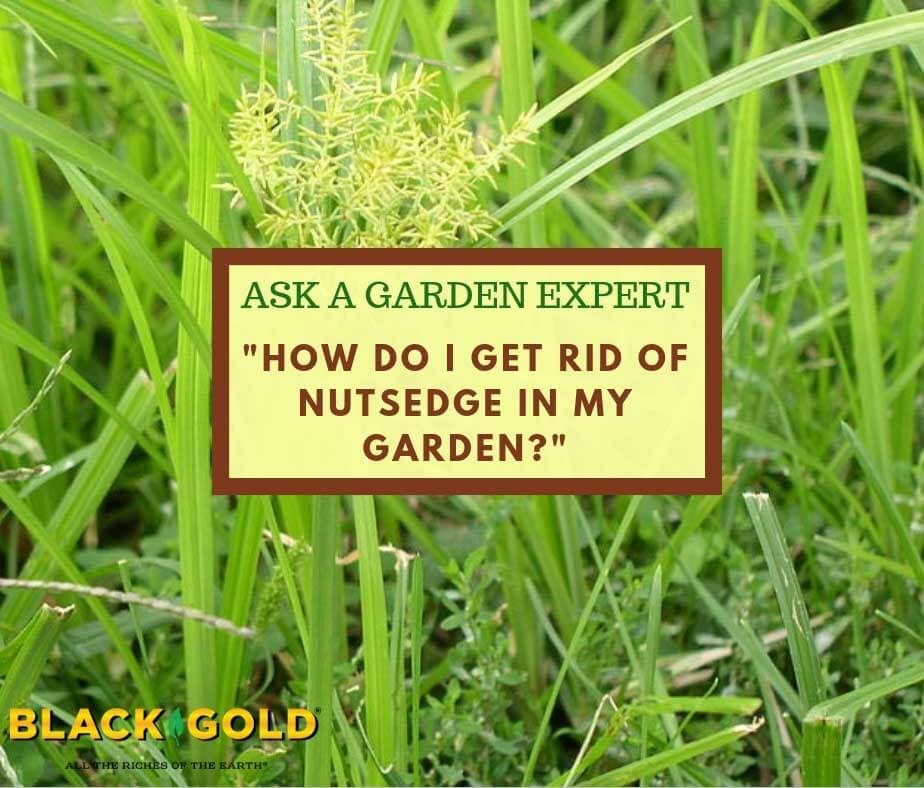“How can you get rid of nutgrass (aka. yellow nutsedge)? Question from Michael of California.
Answer: What a pain of a weed! Huh? You pull it up, and it just seems to return again and again and again. Here’s why. Nutgrass or yellow nutsedge (Cyperus esculentus) is given its name for the little “nutlet” tubers it produces underground. These nutlets are kind of like little weed bombs because each one will develop into a whole new plant if left in the ground. It’s a devious way for the plants to be foraged or pulled and still remain in the soil ready to reroot, reshoot and grow as if never removed. This is also why foliar weed killers rarely touch it. Nutsedge grows best in moist soil but can tough it out almost everywhere. [As a side note, nutsedge nutlets are also edible and eaten in many cultures. Click here to read more.] We encourage you to view the nutlets and more images for ID on this Washington State webpage before starting the removal process.
Here are some truly effective ways to remove nutsedge without using chemicals.
- For small garden infestations, dig up plants to a depth of 10 inches, place weeds and soil on a tarp, and gather up all plant parts, making sure you remove all the nutlets. Nutlets need to be fairly close to the soil surface to sprout and can survive in the soil for 2 to 4 years, so after eradicating most of the sedge from an area, opt for a no-till strategy to keep any deep nutlets from being brought too close to the surface. Then keep a lookout for newly sprouted sedges and just pull or lightly hoe them when they are tiny. Adding a thick layer of organic mulch is also wise.
- For large garden infestations, dig it up plants as completely as you can, and then smother the area with weed cloth covered with an additional layer of mulch or leaf compost (for ornamental beds) or straw (for vegetable beds) to keep seedlings and nutlets from resprouting. After a few years, the residual nutlets should be gone and the weed cloth can be removed.
- For both cases, keep a lookout for newly sprouted sedges and remove them on sight. Never let them get large enough to set seed.
I hope these tips help!
Happy gardening,
Jessie Keith


